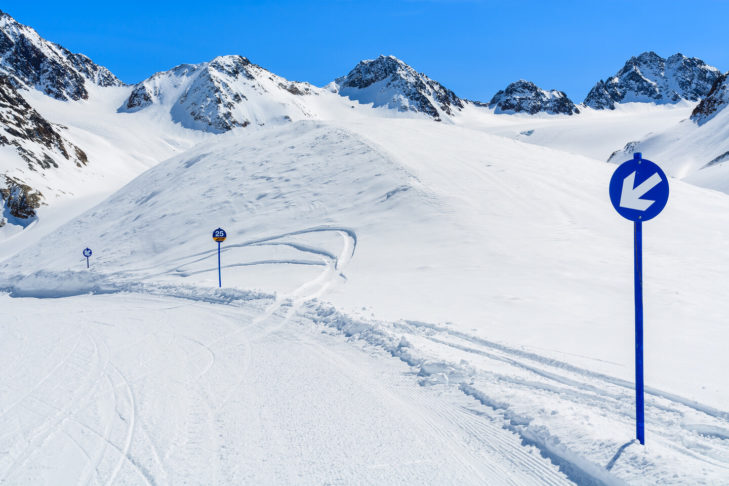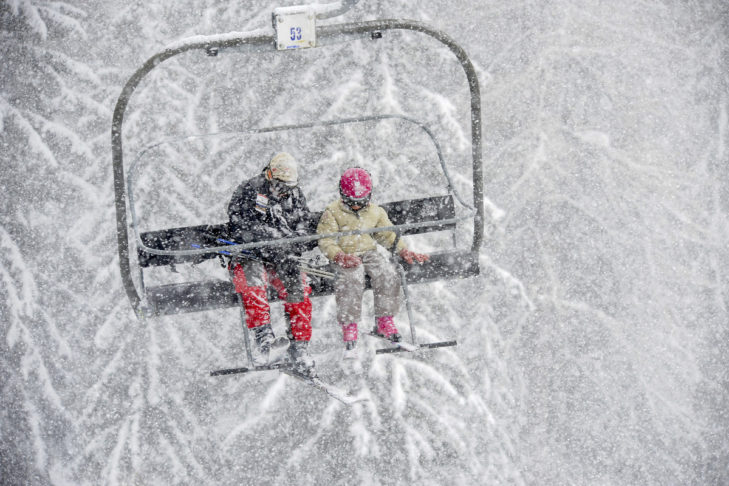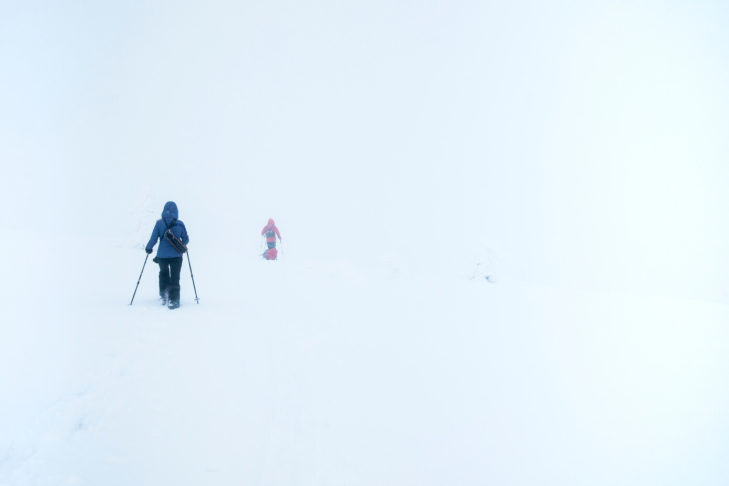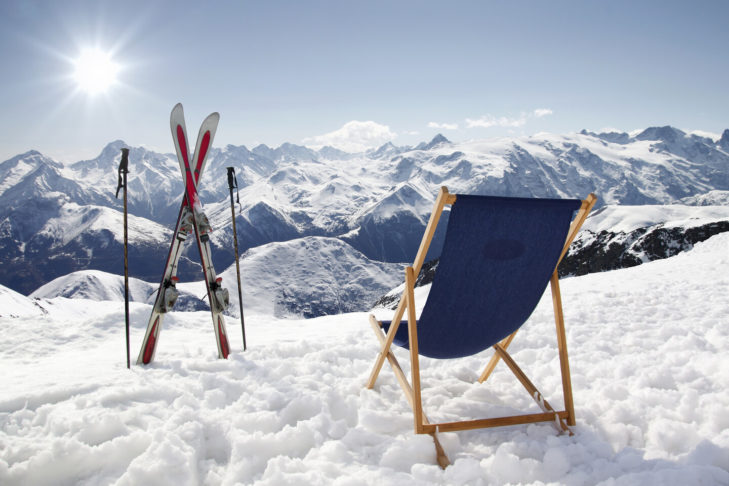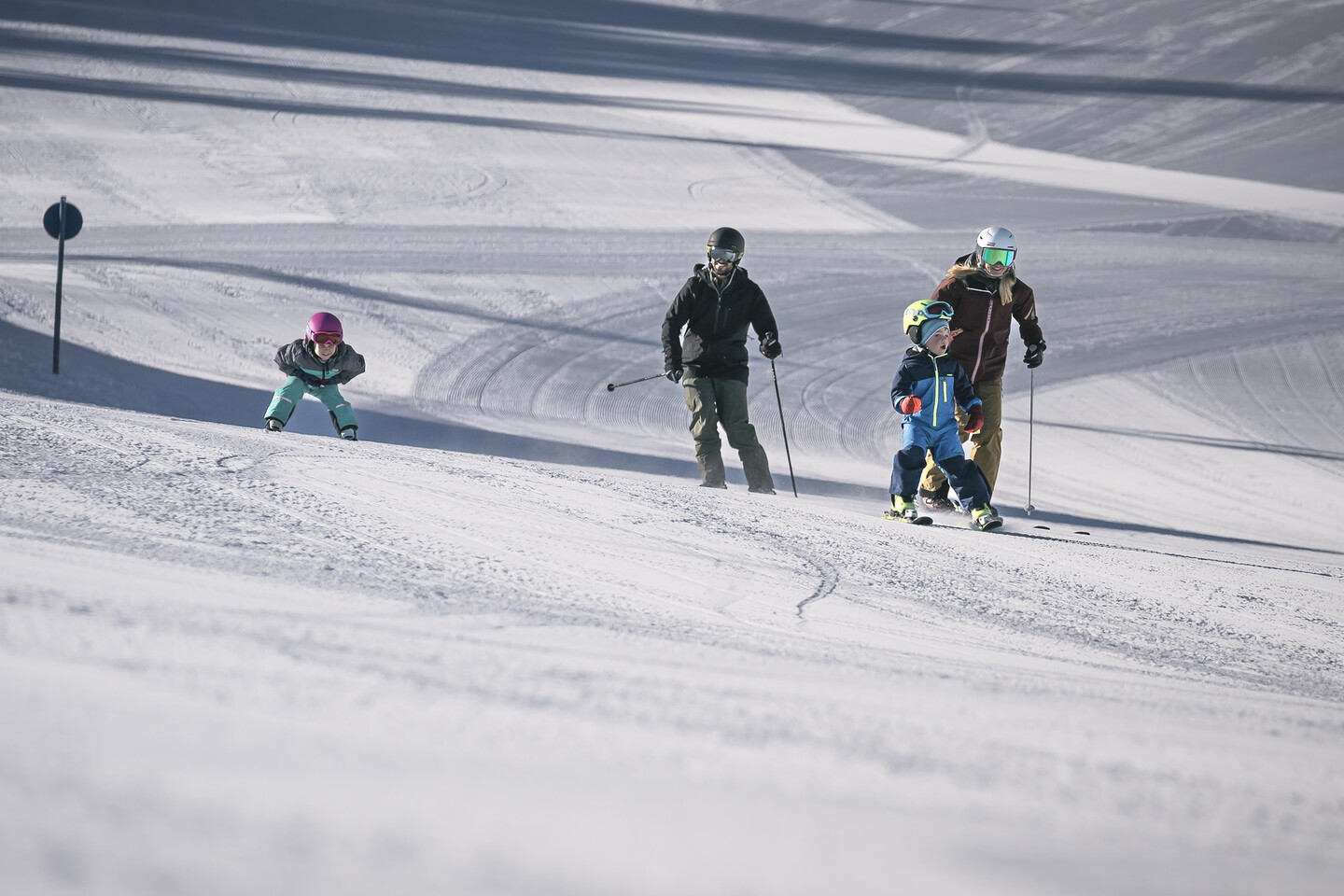Markings provide winter sports enthusiasts with an initial guide to the level of difficulty of a slope. However, markings alone are not enough to assess the slope conditions. Winter sports enthusiasts should also consider other factors such as weather conditions, the time of day or their own abilities before venturing onto a slope. SnowTrex shows how to correctly assess slopes conditions and difficulty levels.
Markings are not everything
Even if the markings follow a certain standard, the differences between countries show that they should not be regarded as absolute categories. It is safer to ski if the markings are understood as guidelines. They give winter sports enthusiasts an orientation so that beginners do not venture blindly onto a dangerous slope. However, there are other important factors that determine the difficulty level of a slope or the slope conditions.
Weather conditions
One of the most important factors is the weather. The slope conditions can vary greatly depending on the weather. Blue skies and sunshine offer ideal visibility and make skiing easy. However, fog or snowfall can impair visibility to such an extent that even a blue or green slope becomes dangerous, even with good visibility protection.
Fresh new snow can also make slope conditions more difficult. The new snow is very soft and doesn’t stick to the ground as well. On the one hand, this requires a lot of strength and skill to avoid sinking into the snow. On the other hand, good skiers often ski too fast in such conditions, as you can glide particularly well in powder snow. The high speed of other skiers can be such a risk factor for beginners, which is why it is better to ski on a less difficult slope if you don’t feel confident.
Furthermore, both temperatures and wind can affect slope conditions. The wind factor makes the temperatures feel colder. The body needs more energy to keep warm, which saps your energy. That’s why you shouldn’t venture onto slopes that are too difficult in particularly cold or windy weather. Even if you have the skills, you run the risk of overexertion. This can quickly lead to tiredness, a lack of concentration and therefore more accidents.
Snowfall can also turn a blue slope into a mogul slope as the fresh snow piles up small hills. These are great fun for experienced skiers, but pose a major challenge for inexperienced winter sports enthusiasts. Beginners run the risk of injury here. It is better to avoid the moguls or find a slope that has already been levelled by a snow groomer.
In general, it is important to know your abilities properly. If you can just manage a blue slope in ideal conditions, this does not apply to difficult weather and visibility conditions. In this case, you have to be honest and assess yourself so well that, if in doubt, you don’t go downhill. This is necessary because risky behaviour in sport leads to more accidents. Many accidents can be avoided if you exercise a little more caution. If the conditions become too difficult for your own ability, it is better to take a break. After all, it is also wonderful and cosy to watch the snow flurries outside in the warmth with a hot chocolate.
The rules of conduct of the International Ski Federation (FIS) are a practical guide: skiing should always be adapted to the conditions and your own ability.
Your own abilities
In addition to the external weather conditions, your own ability is an important factor that contributes to the level of difficulty of a slope. This applies not only to your experience as a skier, but also to your form on the day.
Some things are quite clear: as a complete beginner, you are not skiing on a diamond slope. But many situations are a personal grey area. What does it look like as an advanced beginner on a black slope? As an experienced winter sports enthusiast, should you venture into open terrain at danger level 3 on the avalanche scale? In fact, it is precisely these intermediate levels that lead to accidents particularly frequently. Almost half of all fatal avalanche accidents occur at danger level 3: The highest risk lies in overestimating your own abilities.
It is therefore safer to ski a few red slopes first, for example, which you are clearly confident about, and then decide whether your skills are sufficient for the black slopes. Because a lot also depends on your form on the day: Are you well-rested? Did you train before your ski holiday? Was the après-ski evening perhaps a little too long after all? All of this influences your physical and mental fitness. If you’re in good shape, you’ll be able to ski down a black slope even as an advanced beginner. On the other hand, if you have drunk too much alcohol the night before and are possibly even hungover on the slope, you won’t be able to concentrate well and may risk an accident on a supposedly easy descent, even as an advanced skier.
Before venturing onto the difficult slopes, you should think carefully: How do I feel today? What is my skiing level really like? If in doubt, it is advisable to start with an easier slope. After all, skiing is fun here too and you won’t endanger yourself or others. Your own abilities are therefore a factor that should not be underestimated when it comes to the difficulty level of a slope. This includes your own ability, but also your form on the day and your general physical fitness. It is important to go through these points honestly before setting off and, if in doubt, start with an easier slope rather than recklessly putting yourself and others in danger.
Slope conditions can change suddenly
But what happens if you ski down a slope and only then realise that it is too difficult? It depends on the circumstances: If you are still at the summit and already realise that you might not be able to ski down without risk, you should turn back immediately and take the ski lift back down the mountain.
If you are already on the slope and realise that it is too steep, the sliding technique can help. This involves placing both skis perpedicular to the slope and parallel to each other and putting your weight on the downhill ski. This is how you slide down. After a few metres, stop by wedging the uphill ski into the snow. Do this alternately and slowly until you reach the bottom. It doesn’t look very graceful, but it is the safest way to get down unharmed.
If the slope conditions change during the descent, for example due to a change in the weather, it depends on where you are and how severely visibility is affected. If a whiteout occurs, for example, you quickly become disorientated and often can’t see anything at all. If possible and safe, you should then change terrain immediately. Slopes with trees and rocks can help with orientation. If the valley or a mountain hut is nearby, you should take shelter here. If this is not possible, take a break and wait until the slope conditions improve. This also applies to strong winds, heavy snowfall or fog. Better safe than sorry!
Attention, slopes can also change within a few hours. If many people ski on a slope or if the weather conditions change, a slope that was easy to ski on in the morning can now consist of heavily compressed snow and therefore become much harder. Steep slopes in particular become more difficult to ski as the day progresses because many skiers do not ski on edge and so tend to push the snow to one side, which can quickly turn a flat slope into a much more difficult mogul slope. Although slope are regularly levelled, this rarely happens within a single day of operation. You should generally bear this in mind when skiing on all slopes.
Wind and weather as well as the time of day can influence the difficulty of a slope. Strong winds that affect visibility or a sudden snowstorm are nothing unusual in the mountains. In such situations, however, supposedly easy slopes suddenly become difficult routes. Depending on your own ability, you should either ski very carefully towards the valley, pause your journey briefly or get to safety. slope conditions also change with the time of day. After many winter sports enthusiasts have skied on a slope, it can become icy and hilly, making the slope more difficult to ski on in the afternoon.
Skiing in groups
If you are on a ski holiday with friends who are more experienced or want to ski on more difficult slopes than your own abilities allow, you may feel in a quandary. You may not want to admit that you can’t master the slopes or you may not want to ski alone. However, you should be honest and admit that the planned slopes are too complicated and you don’t want to injure yourself or hold up the others. The group can then possibly split up: One part skis with the inexperienced friends on easier slopes and helps to improve their skills. This can also be done alternately so that the same people don’t always have to ski the easier slopes.
If the group doesn’t want to do this, you can hire a ski instructor and improve your skills over a few days of intensive training. This way, you learn quickly, nobody has to ski slopes that are too difficult or too easy and at the end of the holiday, the level may even be at the same level as your friends, so that you can go on a tour together. But this is not a must. If you feel too insecure or are afraid of injuring yourself, it’s better to ski on the easier slopes. Here, too, you can make new friends and ultimately the following applies: those who feel safe have more fun on the slope!
FAQ’s on slope conditions and difficulty levels
What does my form on the day have to do with the level of difficulty?
Our physical and mental abilities influence how safely and focussed we ski. They should therefore be taken into account when choosing a slope, regardless of ability or the markings. Someone who is well-rested and fit will have fewer problems on more difficult slopes than someone who is overtired and out of shape.
What do you do if the slope is too difficult?
You can either ride straight back down in the chairlift or gondola or, if your ability allows, carefully slide down the side of the slope. If the conditions change during the descent, you should either get to safety, change terrain or stop and wait until the weather improves.
Why do slope conditions change over the course of a day?
The more skiers there are on a slope, the more the snow is compressed. This makes slopes icier and more difficult to ski on, especially in the afternoon. This is especially true for steep slopes. In addition, the slopes are usually only freshly ploughed once on an operating day, usually in the morning.
What do you do when your friends ski on more difficult slopes than you can?
The group can split into a beginners’ group and an advanced group to help the inexperienced members. Another option is to hire a ski instructor and improve your own skills independently of the group. As a general rule, you shouldn’t ski on slopes that are too difficult so that you don’t endanger yourself or others.


